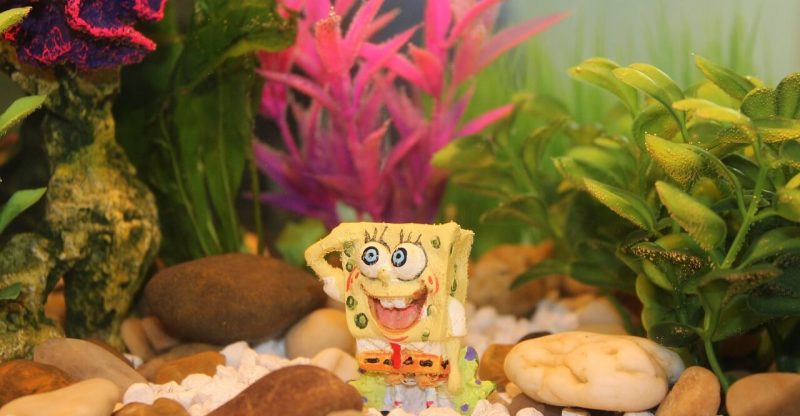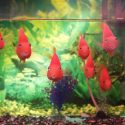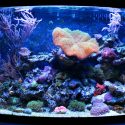How To Clear A Cloudy Fish Tank?
Does water in your brand new aquarium quickly get cloudy after being cleaned for a few days? Do not worry because it is a common issue which can be resolved easily on your own. There are many causes for this problem, including chemical additives, fish food, fish discharge, bacteria, or by-products from the decorations. Here are a few useful tips on how to clear a cloudy fish tank.
1. Change the water
Before starting, make sure to unplug the heater and disconnect any power sources to prevent any electric shocks while maintaining. Next, you need to remove all fake plants and decorations within the tank and put them on clean towels. Similarly, turn the pump off and take the filter out of the aquarium.
Run the fake plants, decorations, and filter under lukewarm water, then rinse them off thoroughly with clean water to make sure that no excess dust or grime remains. After that, use an algae sponge to scrub four sides of the fish tank for at least 2 or 3 passes.
The next step is connecting a syphon gravel cleaner, a composite tube connected to a bucket or faucet to gather extracted water. Make sure to push its end to the bottom of the gravel layer. Debris will gradually rise via the syphon with the water and gravel.
As the water gets clear, you need to pinch the pile above the gravel or close the valve to let the rocks fall back down. Repeat this process by pulling up and down the gravel cleaner to the adjacent areas until the water gets completely clear.
Fill the aquarium to the normal levels by switching the faucet pump or doing it manually with a bucket. During this process, you can add any chemical treatments like de-chlorinator to get rid of bacteria. Once everything has done, put back the filter and decorations, the start the pump and turn on the heater.
2. Maintain and clean the filter
Cleaning the filter can be time-consuming and relatively challenging. However, it is essential to keep the water in your fish tank always clean and free of bacteria or residue. Follow our guide to make it easier for you:
a. Mechanical filter
Firstly, you need to unfasten the filer’s top with a screwdriver and remove the pad or sponge. Rinse it under lukewarm water for several minutes or use cleansed water after a water change session. If the pad or sponge gets full of dust or debris, consider replacing it with a new one. It is advisable to clean a mechanical filter twice per month.
b. Chemical filter
Chemical filters are often in the form of pellets or granules which are placed after the existing mechanical filter or between the biological and mechanical filter. Normally, you just need to pour the suggested amount of pellets or granules to the filter so that they would absorb medications, organic particles, dissolved colours, and odour-causing bacteria. These filters can be kept for 1 to 2 months before a new replacement.
c. Biological filter
This filter is responsible for holding the bacteria which breaks down materials. This plays an essential role in keeping the water free of nitrates and ammonia, toxins which cause your aquarium water to turn cloudy. All you need to do is pulling the unit and rinse it with changed water to retain helpful slime and bacteria.
d. Filter housing
Lastly, you should rinse the piles (outlet and intake) and housing of the filter as well. For any moving components, you should use aquarium-safe lubricants like liquid silicone or petroleum jelly. Once every part has been cleaned, put them back and place in the aquarium.
Watch this helpful clip to learn more about cleaning an aquarium:
3. Treat the source
In addition to these two methods, you can treat the source of cloudy water:
a. Feeding less
It is recommended to feed your fish once per day and remove any uneaten food after ten 10 minutes. Since your fish only requires light feedings, you can do this 1 or 2 days each week.
b. Adding aquarium salt
Aquarium salt is basically ordinary salt without additives. By adding it into the water, you can dissolve any constituents and residue quickly. Ideally, it is suggested to add 1 tablespoon or 15 ml of aquarium salt for each 19l of water. Make sure to ask the shop owner or your vet whether your fish can tolerate this substance.
c Add water conditioner
With water conditioner, you can eliminate nitrates, ammonia, chloramine, and chlorine directly from cloudy water (both salt and fresh environments) in your fish tank. Instructions can vary, but you should pour it directly into the water at the rate of around 50 ml for per 190 l of aquarium water. Make sure to add this when you change the water too.





